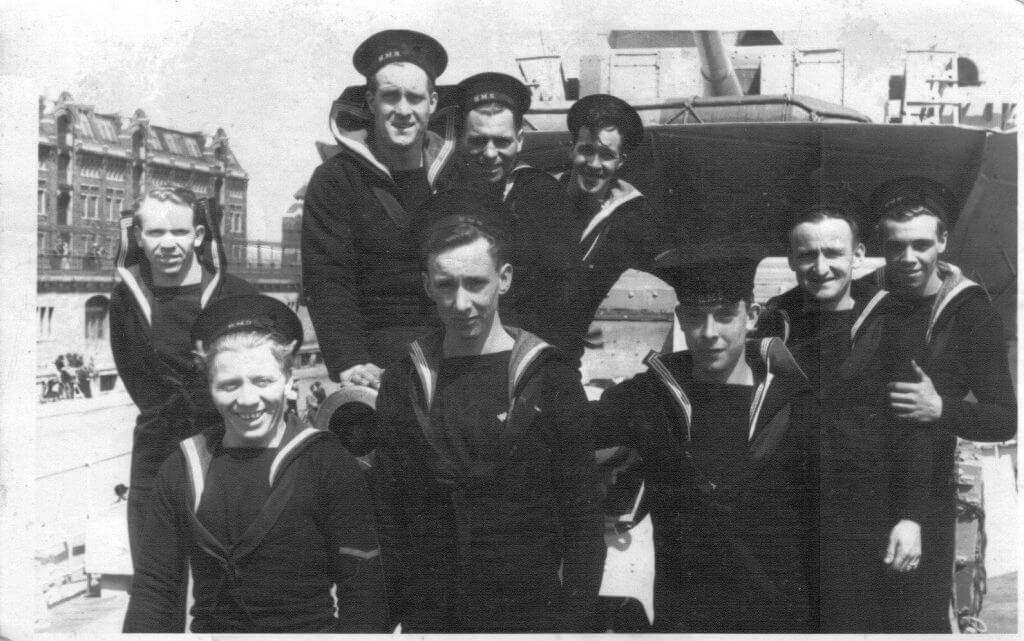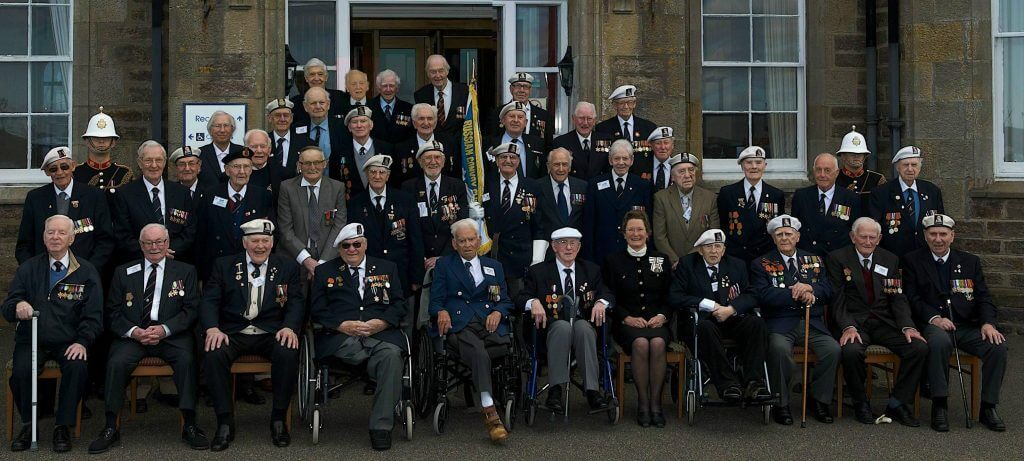The Arctic Convoys of World War Two
Date: February 17th to May 31st, 2020.
Curated in partnership with the Russian Arctic Convoys Club (RACC), this exhibition commemorates the veterans of the Arctic Convoys and the 75th anniversary of the end of the Second World War.
Operating between 1941 and 1945, the Arctic Convoys kept the supply routes open to Russian and helped support the defence of the Soviet Unicorn from German forces. In four years, over 3000 Allied sailors and 100 Royal and Merchant Navy ships were lost.
Scroll down to read more about the stories from the exhibition.
-
How the Convoys Operated
The convoys consisted of Merchant Navy ships carrying supplies and Royal & Allied navy ships escorting them. By 1942, both air and submarine patrols had been added to help defend the convoys.
One of the worst convoy losses occurred with PQ17 in July 1942. With the threat of a German naval attack, the First Sea Lord ordered the “Convoy to Scatter”, and the Merchant ships were left defenceless. Picked off by aircraft and U-boats, hundreds of men were killed, and 24 ships were lost.


How the Convoys Operated
The convoys consisted of Merchant Navy ships carrying supplies and Royal & Allied navy ships escorting them. By 1942, both air and submarine patrols had been added to help defend the convoys.
One of the worst convoy losses occurred with PQ17 in July 1942. With the threat of a German naval attack, the First Sea Lord ordered the “Convoy to Scatter”, and the Merchant ships were left defenceless. Picked off by aircraft and U-boats, hundreds of men were killed, and 24 ships were lost.
-

Life on the Convoys
Life on the convoys was hard. Ships had to break their way through ice and endure gales of over 70 miles per hour. Temperatures could drop so low on deck that eyeballs were known to freeze, and sailors were equipped with as many layers of clothing as possible.
However, the men did enjoy good times as well, with occasional singsongs and parties on board the ships.

Life on the Convoys
Life on the convoys was hard. Ships had to break their way through ice and endure gales of over 70 miles per hour. Temperatures could drop so low on deck that eyeballs were known to freeze, and sailors were equipped with as many layers of clothing as possible.
However, the men did enjoy good times as well, with occasional singsongs and parties on board the ships.
-
Veteran Stanley McKessock
At 18 years old, Stanley McKessock was called up for National Service in World War Two and volunteered for the Royal Navy. He always remembered thinking it would be “safer” than the army.
Stanley trained as a gunner and served on HMS Repellent and HMS Premier as part of the Arctic Convoys. He recalled the low temperatures on the ships as well as the friendliness of the Russian people who they were helping.


Veteran Stanley McKessock
At 18 years old, Stanley McKessock was called up for National Service in World War Two and volunteered for the Royal Navy. He always remembered thinking it would be “safer” than the army.
Stanley trained as a gunner and served on HMS Repellent and HMS Premier as part of the Arctic Convoys. He recalled the low temperatures on the ships as well as the friendliness of the Russian people who they were helping.
-

Veteran Colin Cox
Colin Cox joined the Navy in 1910 when he was 16 years old and by the outbreak of World War Two had risen to the rank of captain.
Serving on several Arctic Convoy vessels, Colin kept a diary of his exploits during the war and he always messaged his wife and two daughters back home. One memorable telegram simply said –
"Still alive and kicking! Love Daddy”.

Veteran Colin Cox
Colin Cox joined the Navy in 1910 when he was 16 years old and by the outbreak of World War Two had risen to the rank of captain.
Serving on several Arctic Convoy vessels, Colin kept a diary of his exploits during the war and he always messaged his wife and two daughters back home. One memorable telegram simply said –
"Still alive and kicking! Love Daddy”.









